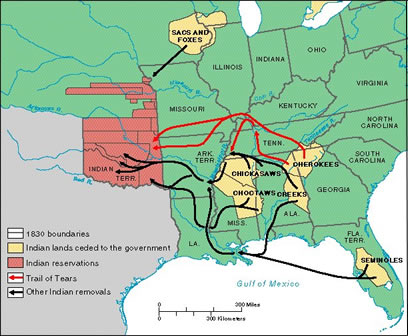In This Year to the Mariens I Drew 450 Years After Columbus Sailed the Ocean Blue
…to murder the indigenous populations of the Caribbean in a systemic regime of rape and genocide that inspired the future colonists to do the same.
The history of the "free world" is one soaked in the blood of the Native Americans. From the earliest days of settlers on until even today, the citizens and later government of the United States have exploited and murdered countless Native American men, women, and children alike in order to seize control of the land that they inhabited. By the time that the 1900s rolled around, the population of Native Americans in the United States had been reduced from upwards of 12 to 18 million to a mere 237,000 in the span of four centuries with white settlers using methods of murder such as biological warfare and forced relocation.
Settlers would often present pesky Native American tribes with blankets laced with diseases that had never before been seen on the "virgin soil" of the North American continent, infecting the targeted tribes with smallpox, syphilis, measles, influenza, whooping cough, diphtheria, typhus, bubonic plague, cholera, and scarlet fever – the first being the most popular mode of murder. These diseases wiped out nearly 90% of the Native American population, not always intentionally but more often than not purposefully. For example, in 1763, when a particularly serious uprising threatened British settlers in Pennsylvania, Sir Jeffrey Amherst, the commander-in-chief of British forces in North America, wrote to Colonel Henry Bouquet at Fort Pitt that he would "do well" if he attempted to "inoculate the Indians by means of blankets… to extirpate this execrable race."

There were also examples of direct violence blatantly targeted at the indigenous population. In the Northeast, proclamations for scalps, or "redskins," of Native Americans permeated both peace and war times. The Phips Proclamation of 1755 had King George II of Britain calling for, "subjects to embrace all opportunities of pursing, captivating, killing and destroying all and every of the… Indians," and priced rewards for adult male, adult female, and children: fifty pounds, twenty-five pounds, and twenty pounds, respectively. Considering rates of inflation, the prices are equivalent to several thousand pounds by today's standards.
By the time the American Revolution was over and done with, most of the Native American population had already been systemically depleted due to disease and displacement. With the Indian Removal Act of 1830, President Andrew Jackson called for the removal of the "Five Civilized Tribes," the Cherokee, Chickasaw, Choctaw, Creek, and Seminole, from the cotton-growing regions of the South. Between 1830 and 1838, federal officials forced approximately 100,000 Native Americans from their homelands, a journey that became known as the Trail of Tears due to the thousands of deaths caused by cold, hunger, and disease.

As Manifest Destiny began to take root in American society, inspiring westward expansion into "Indian Territory," violent conflicts between frontiersmen and Native Americans multiplied. California, for example, was once the most densely and diversely populated areas for Native Americans in the North American continent, but once the 1848 California gold rush hit, causing 300,000 people to migrate to the West Coast, toxic chemicals and gravel ruined traditional Native hunting and agricultural practices, resulting in starvation for many Native Americans coupled with the usual racially-motivated killings. In 1850, the Californian government passed the Act for the Government and Protection of Indians, addressing the punishment and "protection" of Native Americans and facilitating the systemic removal of their culture and land. Moreover, it legalized a modified form of slavery, allowing for the buying and selling of Native American children.
Multiple incidences of United States military forces attacking peaceful villages and slaughtering men, women, children, and the elderly indiscriminately occurred during the Plains Indian War, which lasted from 1854 to 1890. The worst of which were the Sand Creek Massacre and the Wounded Knee Massacre. The Sand Creek Massacre of 1864 was an atrocity that occurred when the approximately 700-man force of the Colorado Territory militia attacked and destroyed a peaceful, unarmed village of Cheyenne and Arapaho, killing and mutilating 70 to 163 Native Americans, about two-thirds of whom were women and children. The Wounded Knee Massacre of 1890 occurred when while disarming an encampment of Lakota Sioux, the United States 7th Calvary opened fire and killed 200-300 Lakota men, women, and children, causing a massive rebellion that led to hundreds of Native American deaths on the Pine Ridge Reservation in North Dakota. By the end of the 1800s, nearly all of the Native Americans were either dead or forced onto reservations, where conditions were less than livable.
The genocide of the Native Americans has never officially been recognized as such by the United States government despite satisfying the every single part of the definition of genocide created by the United Nations in 1948, which is as follows: "any of the following acts committed with intent to destroy, in whole or in part, a national, ethnical, racial or religious group, as such: killing members of the group; causing serious bodily or mental harm to members of the group; deliberately inflicting on the group conditions of life calculated to bring about its physical destruction in whole or in part1 ; imposing measures intended to prevent births within the group; [and] forcibly transferring children of the group to another group."
Source: https://sites.psu.edu/vsmissues/2016/02/17/in-1492-columbus-sailed-the-ocean-blue/
0 Response to "In This Year to the Mariens I Drew 450 Years After Columbus Sailed the Ocean Blue"
Post a Comment